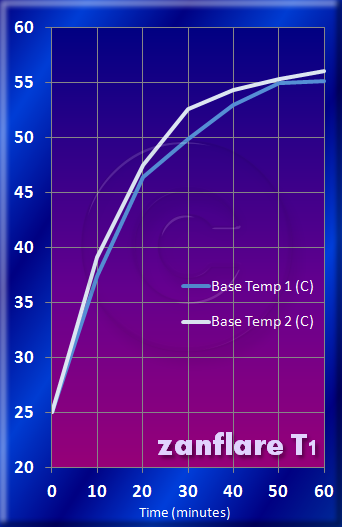Okay, here is how I tested my two lights. One used the stock battery and the other an Evva brand protected Panny B 3400mah (69mm). Both fully charged.
Ambient was 25°C. Lamps where laid in their side.
I let them run about 10 to 12 minutes at a time, then checked the tail cap temp, the inner battery tube temp and the battery temp (the negative electrode was the hottest part). I probably lost a good bit of heat just from checking every 10 minutes so at the 40 minute mark I decided to let it run 20 minutes continous to try and max out the temps.
I took amp draws before the test with each cell and ran all tests on the CW setting as that seems to pull the highest amps.
Here’s how and where I measured. The bare aluminum on the tail cap seemed to be the hottest part.



The two batteries.

All the temps seemed to be pretty accurate. They steadily climbed and then stated to level off. There are a couple measurements at 30 minutes that are a couple degrees cooler than before. Those might be anomalies. It’s tricky getting the probe to press against things hard enough so they might be about 2° too low.
Anyway, here are the results:

I hope you guys can understand them.
Max tail cap temp was 54°C.
Max battery tube inner wall was 55°C.
Max battery temps were 52°C. It was hard to hold them. This might be a safe battery temp, but I still don’t like it. I’m certainly not used to it.
I stopped testing after 60 minutes since the temps were leveling off. If they had run for 60 minutes continous (no interrupting to check temps) I think all temps might have gone one or maybe 2 degrees higher. I’m not sure. Both batteries were in the 3.6v range after the tests so their output might have have been going down. Total runtime was probably closer to 75 minutes. After recharging both batteries, the capacity added to each was right at 1480mah.
About the battery temps, it seems like the heat shrink acts as an insulator not only electrically, but also thermally. I suspect most of the heat is going through the tail cap, up the spring and into the bottom of the battery. It’s an all metal heat path so conduction is good.
Some of the heat probably comes through the plastic heat shrink, but not most of it. It’s just not a good conductor. This is my theory, at least.
The positive electrode was the coolest. It only makes contact with the upper circuit board, not the battery tube.












